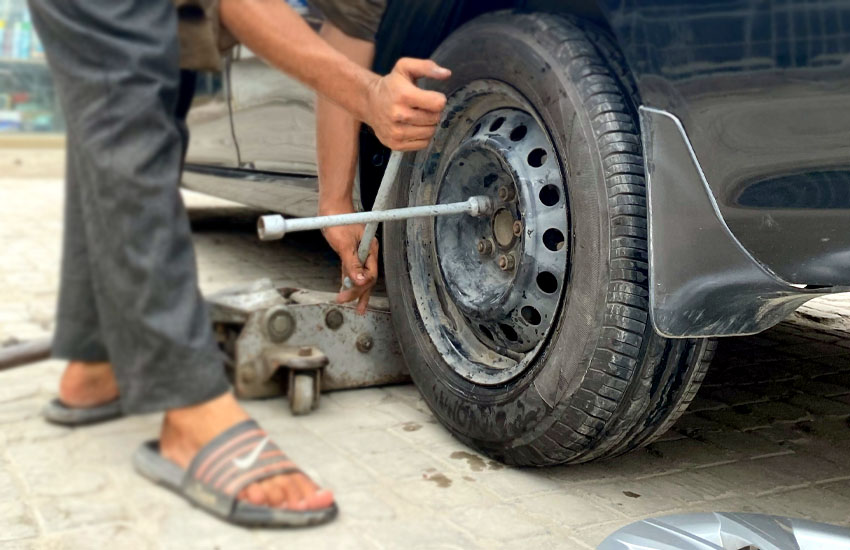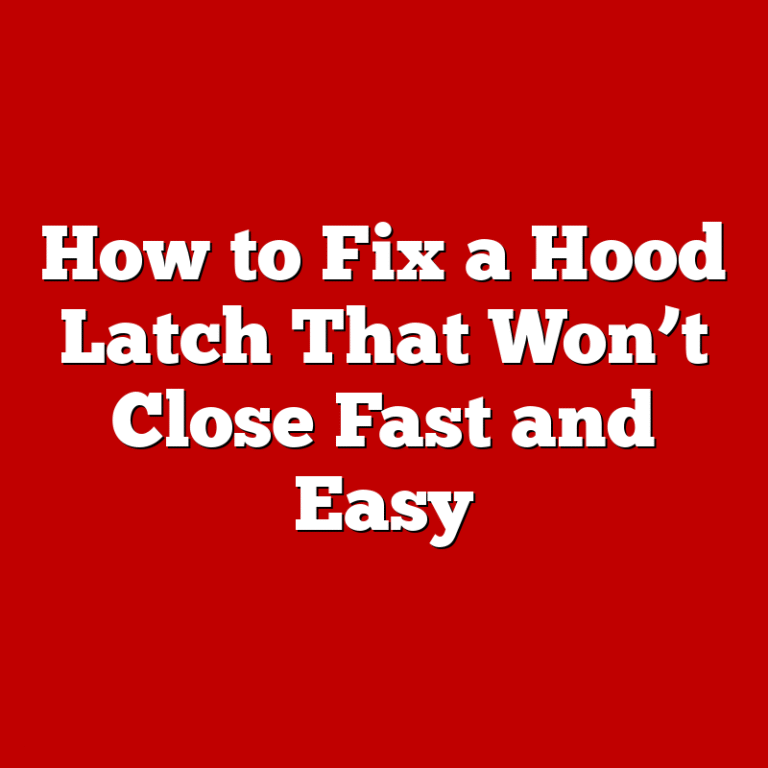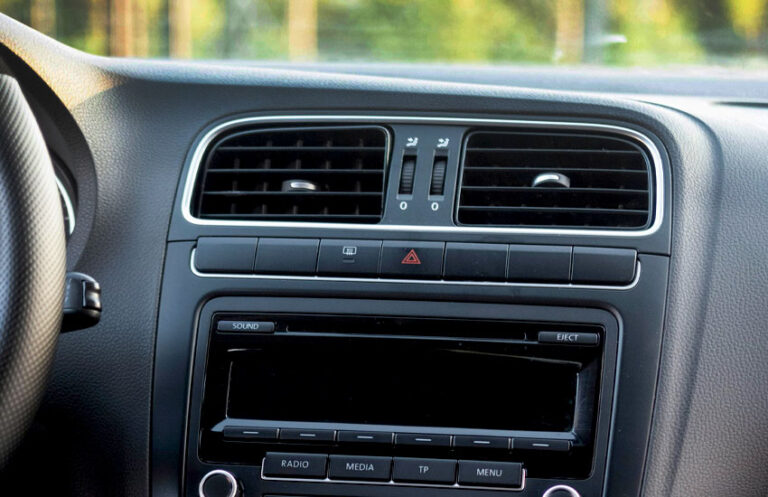As an Amazon Associate, I earn from qualifying purchases at no extra cost to you.
How to Fix Wheel Bearing Noise When Braking: Simple Steps
If you've ever been driving and heard a strange noise when you press the brake pedal, you might be dealing with an issue related to your wheel bearings. Wheel bearing noise can be annoying, and even worse, it can be a sign that something's wrong with your car. But don't worry! In this guide, we'll talk about what wheel bearing noise is, why it happens when you brake, and what you can do to fix it. By the end, you'll know exactly how to address the problem and make your ride a lot quieter and safer.

What is Wheel Bearing Noise and Why Does It Happen When Braking?
Wheel bearings are crucial parts of your car that help the wheels rotate smoothly. They are metal balls inside a metal ring, and they reduce friction between the spinning wheel and the axle. When your wheel bearings start to wear out or get damaged, they can make a buzzing, grinding, or squealing noise, especially when you apply the brakes. This can be pretty concerning, but before you panic, let's break down what's going on and how to fix it.
What Causes Wheel Bearing Noise?
The main cause of wheel bearing noise is wear and tear. Over time, the balls inside the bearing can wear down or the lubricant inside can dry up, leading to more friction. When this happens, the bearing won't be able to spin as smoothly, and it will create noise. If the problem is left untreated, it can get worse, and the wheel bearing might even fail, leading to bigger and more expensive repairs.
Why Does It Only Happen When Braking?
Wheel bearing noise might only become noticeable when braking because the force on the wheel is greater. When you brake, your car puts extra pressure on the wheel and bearing, which can make any existing noise louder. If your bearing is worn out, the pressure from the brake pads can cause it to grind or squeal.
How to Diagnose Wheel Bearing Noise
Before jumping into fixing the problem, it’s important to confirm that the noise you're hearing is actually coming from the wheel bearings. This way, you avoid spending money on repairs you don't need. Let's go over some easy steps to diagnose if your wheel bearings are causing the noise.
Listen for the Sound
First, pay attention to the sound. A worn wheel bearing usually makes a grinding, humming, or squealing noise. The sound might change depending on your speed. Sometimes, it will get louder as you accelerate, and it might fade when you slow down or turn. The noise is usually consistent and doesn't go away unless the bearing is fixed.
Check the Location of the Noise
Next, try to figure out which wheel the noise is coming from. To do this, you can roll down your windows while driving and listen carefully. If you hear the noise more clearly from one side, that might be where the problem is. You can also try making turns in both directions. If the noise gets louder when you turn right, the left wheel bearing might be the culprit. If it gets louder when you turn left, the right wheel bearing might be the issue.
Perform the Jack Test
You can also lift your car and check for play in the wheels. This test helps determine if the bearing has excessive movement, which could indicate it's worn out. To do this:
- Make sure your car is securely lifted and supported with a jack.
- Grab the tire and try to move it from side to side or up and down. If you feel any play or movement, the wheel bearing might be worn.
If you notice any of these signs, it's time to fix or replace the wheel bearing. Now, let's dive into how to address the noise and solve the problem.
How to Fix Wheel Bearing Noise
Fixing wheel bearing noise isn't something that's always easy to do on your own, but with the right tools and knowledge, it's definitely possible. Here's a step-by-step guide to help you fix it.
Step 1: Get the Right Tools and Parts
To fix a wheel bearing, you'll need a few tools. Depending on your car and experience level, you might want to seek professional help, but if you’re a DIYer, here are the essentials:
- A car jack and jack stands to lift the car safely
- A socket wrench set for removing bolts
- A bearing press tool (if you’re replacing the bearing)
- Replacement wheel bearings
- New seals or grease (if needed)
It's important to get high-quality replacement parts. While it might be tempting to buy cheaper options, a good wheel bearing will save you money in the long run since it'll last longer.
Step 2: Remove the Wheel and Brake Components
Start by lifting your car with the jack and securing it on jack stands. Always make sure the car is stable before working under it. Once the car is lifted, take off the wheel to access the brake components and wheel bearings. Depending on the type of car you have, you may need to remove the brake rotor and brake caliper as well to get to the wheel hub where the bearing is located.
Step 3: Inspect the Bearing
With the wheel and brake components removed, it's time to inspect the wheel bearing. If the bearing feels rough or you notice any visible damage, it's a good sign that it needs replacing. Sometimes, it might be possible to lubricate the bearing if it's just dry, but if it's worn out or damaged, replacing it is the best option.
Step 4: Remove the Old Bearing
Removing the old bearing can be tricky, especially if it's stuck in place. You might need to use a bearing press or a hammer and punch to carefully tap the bearing out of its housing. Be careful not to damage the surrounding parts as you do this.
Step 5: Install the New Bearing
Once the old bearing is out, you can install the new one. Use the bearing press tool to gently press the new bearing into place. Make sure the bearing is seated properly and that it fits snugly into the wheel hub. If you're replacing any seals or adding grease, do that now before reassembling the components.
Step 6: Reassemble the Brake and Wheel
After the new bearing is installed, it's time to put everything back together. Reattach the brake rotor and caliper, and make sure everything is tightened properly. Once the brake system is reassembled, place the wheel back on and secure the lug nuts.
Step 7: Test the Repair
Lower the car back down and take it for a test drive. Pay attention to the braking performance and listen carefully for any noise. If the noise is gone, congratulations! You've successfully fixed your wheel bearing noise. If the sound persists, there may be another issue that needs further investigation.
I hope this article helped you understand how to address wheel bearing noise when braking. Dealing with strange sounds in your car can be stressful, but now you know the steps to take to diagnose and fix the problem. If you're not comfortable doing the repair yourself, don't hesitate to consult a mechanic. Staying on top of these issues will keep your car running smoothly and safely.
Frequently Asked Questions
Is it safe to drive with wheel bearing noise?
It's not safe to drive with a damaged wheel bearing for long. The noise means the bearing is worn, and if it fails completely, it can cause serious damage or even an accident.
Can I replace a wheel bearing on my own?
Yes, if you have the right tools and experience, you can replace a wheel bearing yourself. However, it can be tricky, so consider asking a professional if you're unsure.
Do I need to replace both wheel bearings if only one is noisy?
If only one wheel bearing is noisy, you don't have to replace the other. However, it's often a good idea to check both and replace them at the same time to prevent future problems.
Is it normal for wheel bearings to make noise over time?
Yes, wheel bearings can make noise as they wear out over time. Regular maintenance and inspections can help catch problems early.
Can driving with a worn-out wheel bearing cause other car damage?
Yes, a worn-out wheel bearing can cause damage to other parts of your car, like the axle or the wheel hub, leading to more expensive repairs.
Do I need to replace my brake pads when fixing wheel bearing noise?
Not necessarily. You don't need to replace your brake pads when fixing wheel bearing noise, but it's a good idea to check them for wear while you're working on the car.
Can a bad wheel bearing cause uneven brake wear?
Yes, a bad wheel bearing can affect the alignment of the wheel, which can lead to uneven brake wear or reduced braking performance.
Is it expensive to replace a wheel bearing?
Replacing a wheel bearing can be expensive, but it's an important repair to make. The cost will depend on your car model and whether you're doing it yourself or hiring a mechanic.





